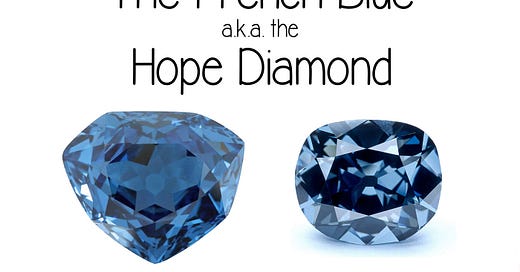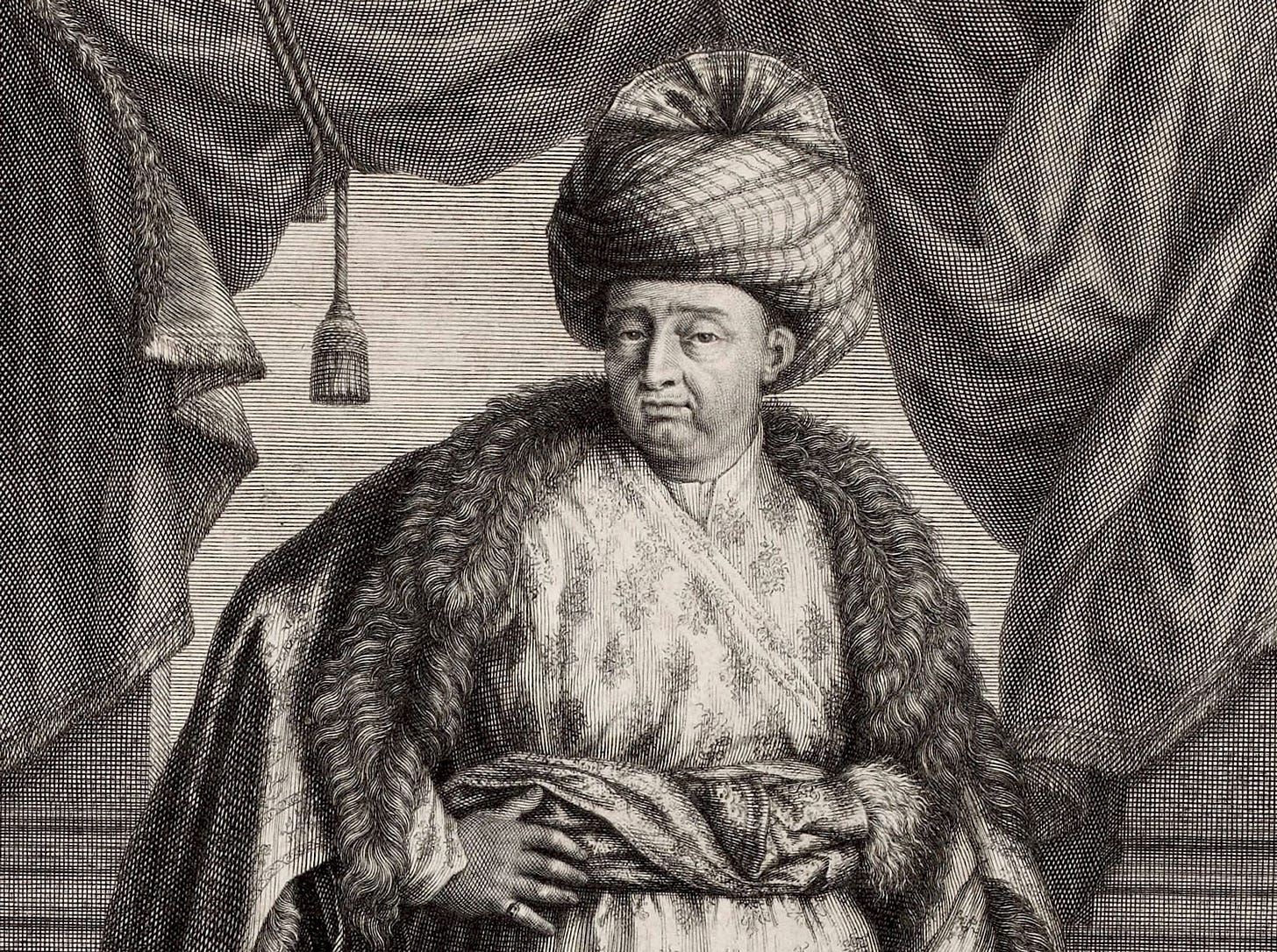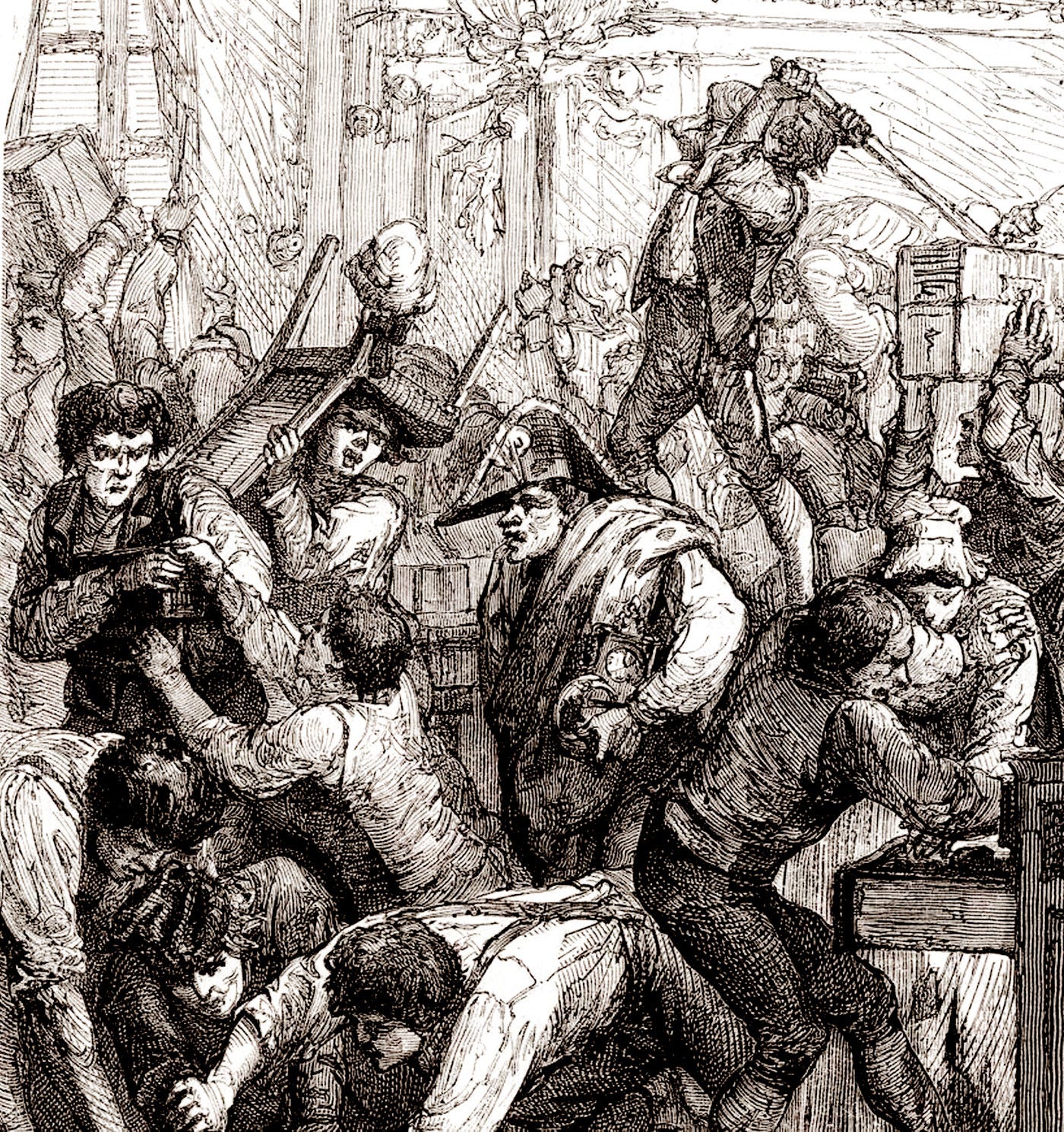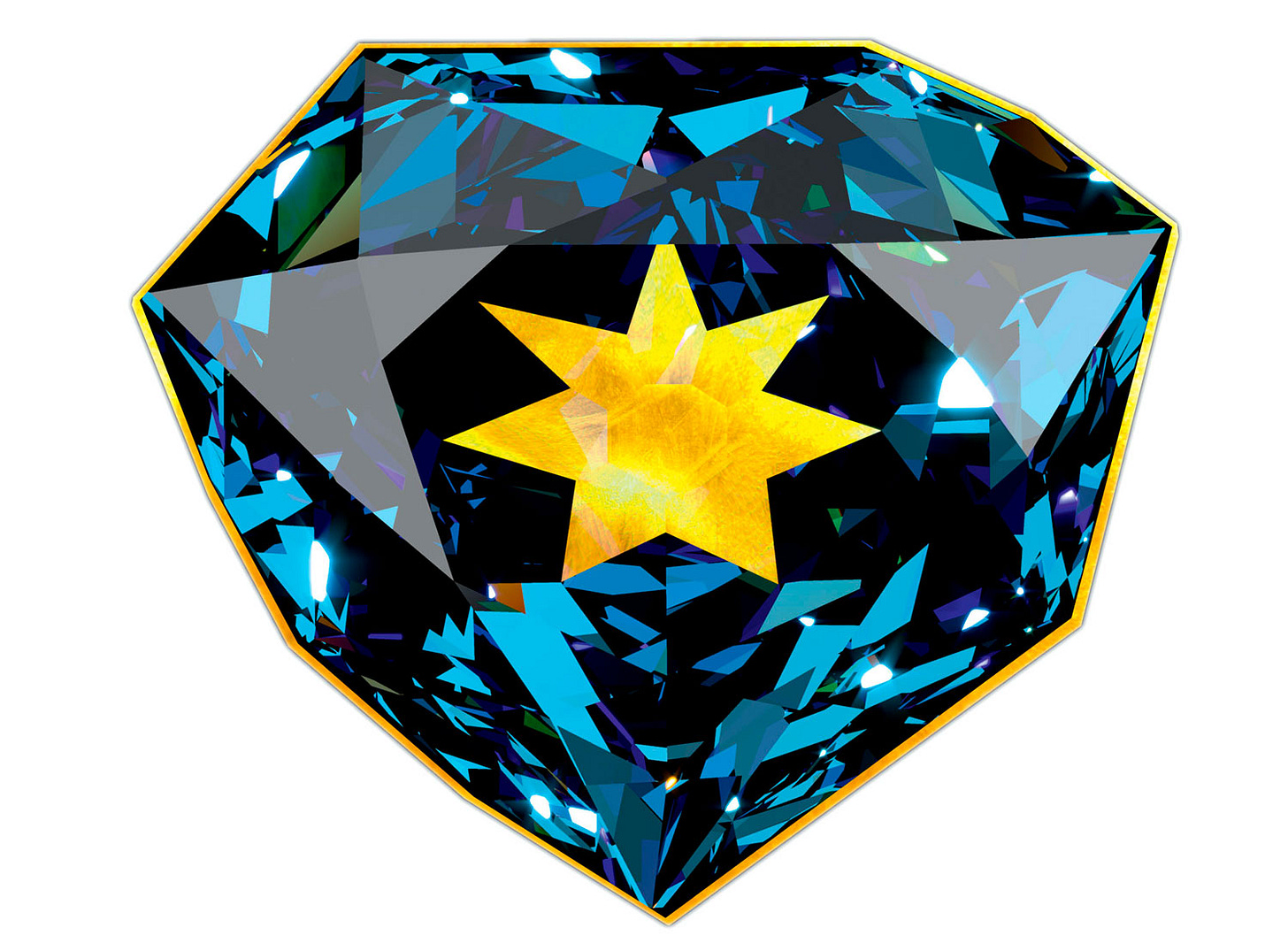The Hope Diamond, a.k.a. the French Blue
Louis XIV's diamond, the Bleu de la Couronne de France, also known as the Hope.
For this story, we travel one billion years into the past. Hold on tight, this is going to be quite a ride. Be warned: it is very, very hot.
We are inside a lava ocean, our planet's heart. Hundreds of miles below our feet, it feels like the sun—the temperature and pressure there are beyond comprehension.
Humble carbon floats in that lava ocean, and heat and pressure force carbon to become diamonds.
Most are imperfect; only a tiny percentage are colorless and flawless.
On rare occasions, carbon floating about the lava gets mixed with a mineral called boron.
That turns them blue: only 0,1% of diamonds are blue.
Old on tight again: how do these diamonds, born about a billion years ago deep inside our planet, make it to us?
They travel by volcanic eruption.
It is raining diamonds!
On a few happy occasions, diamonds get blasted into the sky, directly delivered to us from that lava ocean.
Hang on a minute. It is not a good idea to come close to a volcanic eruption.
We need to wait—and wait more—for the rain and winds to obliterate the volcano and carry the shiny diamonds along the way.
Rivers carry them downstream, acting like natural tumble dryers. Poor-quality diamonds don't survive the experience intact; the good ones shrug it off.
That is why many Indian diamond mines are former riverbeds.
One diamond found in the Kollur mine in the Golconda region turned out to be not just blue but big, at 115 carats.
The adventurer, Jean-Baptiste Tavernier
Think of Tavernier as a French Marco Polo, who traveled several times to India, where he acquired large quantities of gemstones that would make his fortune.
His luck was that King Louis XIV was an avid gemstone collector.
How much did it cost?
Louis XIV paid Tavernier 897,731 pounds for 44 large and 1,122 smaller diamonds.
The Blue was worth a quarter of the entire collection, at 220,000 pounds.
The theft
The story is told in 'The French Crown Diamonds Theft.'’ Let's send a detective on the trail and see where the evidence leads.
The crime
A blue diamond, the color of France, the sun—Louis XIV liked to present himself as the sun god Apollo—making this wonder one of the Sun King most treasured possessions.
The crime is not the theft itself, but ruining a unique marvel: a blue diamond enhanced with gold leaf to resemble the sun's rays and the seven planets as then known.
Hope Diamond comes to light two days after the end of the statute of limitations
Twenty years and two days after the theft, a 'new' blue diamond, the Hope, turns up in London in the hands of a gemstone dealer.
Our detective took evening gemmology lessons, so he contemplates the rarity of blue diamonds.
Could a lost 69-carat blue diamond and a 45-carat diamond that appeared out of nowhere be the same thing?
It has long been known that the Hope and the French Blue were the same diamond
The Hope was twice exhibited in Paris in the 1850s. In 1858, we have a jeweler named Charles Bardot who wrote:
The Hope blue diamond, weighing 44 ⅛ carats join the most beautiful nuances of sapphire to the most vivid diamond sparkle.
We strongly suspect, considering its rare perfection, that it is the reduced blue diamond of France of 67 carats stolen in 1792.
In 1889, in the History of the Gems of the Crown of France, Germain Bapst explains:
The Golden Fleece was taken by a man named Cadet Guillot who took it to London, where he broke it.
The Blue Diamond was cut and sold in two pieces of unequal size.
This mutilation was evidently intended to prevent the recognition of the stone and to ward off any subsequent claim.
The most considerable fraction is still today in London, in the collection left by the late Mrs. Hope.
Definite proof comes with a cast of the Bleu de France
The lead cast of a gemstone was rediscovered in 2007 in French archives, most likely cast from the French Blue.
An 1850 inventory states:
Model of a diamond, remarkable for its clarity—belonging to Mr. Hoppe of London.
This linked the cast to Mr. Hope and implied that he might have owned the original diamond and had it recut.
While that point is uncertain, the lead cast was the last piece to the puzzle, proving beyond doubt that the Hope was the French Blue.
The Bleu de la Couronne de France, also known as the Hope
In 1909, it was offered for sale at a Paris auction as the Hope, with no mention of it being the French Blue.
Pierre Cartier, of the Cartier dynasty, soon purchased and sold it to Mr. and Mrs. McLean.
If anyone wanted to play nationalist pride and claim that the gemstone returned to Paris, that was the opportunity.
But the theft occurred in 1792, and that ship had long sailed over the horizon.
The Louvre Museum Description of the Hope Diamond
In 1962, the Hope was loaned to the Louvre for the Ten Centuries of French Jewelry exhibition.
Here is, for the first time translated into English, the Louvre museum description:
After repeating the inventories of the Crown Jewels, the catalog states:
26 - Hope Diamond
The diamond thus described in 1791 had been placed in Louis XV's Golden Fleece.
This blue diamond, the first known in Europe, had been purchased in India in 1642 by Tavernier, who sold it to Louis XIV in 1668.
Weighing 112 carats ⅛ cut soon after to a weight of 67 carats ⅛, which it kept until the Revolution.
Stolen in 1792 and taken out of France, it must have been recut.
The blue diamond first belonged to Mr. Daniel Eliason, then the financier Mr. Hope, then to various owners, including Mr. and Ms. Mc Lean, and then Harry Winston, who gave it to the Smithsonian Institution.
It weighs 44 carats, which is, it seems, the most significant part of Louis XIV's blue diamond.
Since everyone agrees that the Hope and the French Blue are the same thing, what would be nice would be:
- if the Smithsonian could rename the Hope the 'French Blue Diamond.’
A unique blue Royal diamond has a lot more historical value than a rare gemstone.
- to lend it again to the Louvre for an exhibition.
The Bleu de France, formerly known as the Hope, exhibited at the Louvre; that would be a nice Moment of Wonder.
The Hope and the Mona Lisa are linked, as the 1962 loan of the Hope to the Louvre was part of a reciprocal loan negotiation: the Hope in Paris in exchange for the Mona Lisa in Washington.
https://artjourneyparis.com/blog/mona-lisa-story-behind-fame.html
Notes
Musée du Louvre, Dix siècles de joaillerie française - Exposition 3 mai - 3 juin 1962.
Charles Bardot, Traité complet des pierres précieuses:
https://gallica.bnf.fr/ark:/12148/bpt6k9611941w/f275.image.r=Hope
Germain Bapst, Histoire des joyaux de la couronne de France:
https://gallica.bnf.fr/ark:/12148/bpt6k9940516/f286.item
1909 sale auction catalog:
https://gallica.bnf.fr/ark:/12148/bpt6k12454406/f39.item
https://www.mnhn.fr/fr/le-spectre-du-diamant-bleu-de-louis-xiv
https://www.mnhn.fr/fr/grand-diamant-bleu-de-louis-xiv
https://naturalhistory.si.edu/explore/collections/hope-diamond-history
https://naturalhistory.si.edu/explore/collections/hope-diamond
https://www.gia.edu/gems-gemology/spring-2009-french-blue-hope-diamond-farges
https://www.si.edu/spotlight/hope-diamond
https://www.europhysicsnews.org/articles/epn/abs/2012/01/epn2012431p22/epn2012431p22.html
https://www.goodfon.com/nature/wallpaper-vulkan-izverzhenie-lava-1032.html












